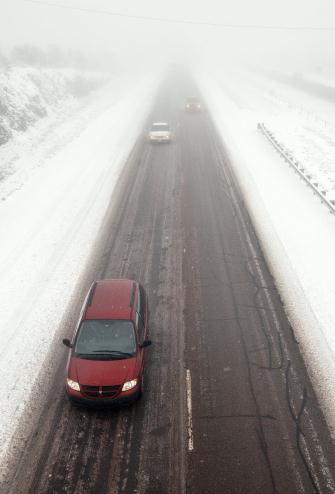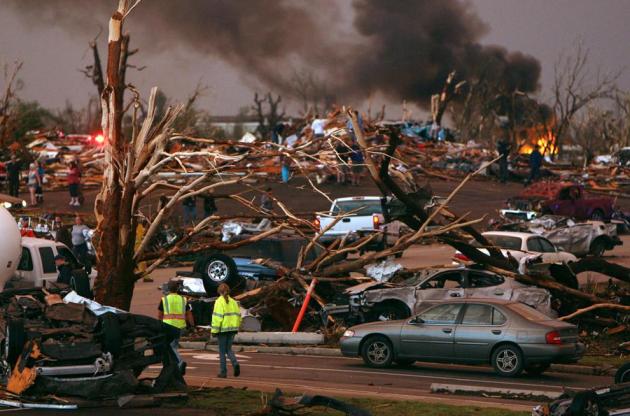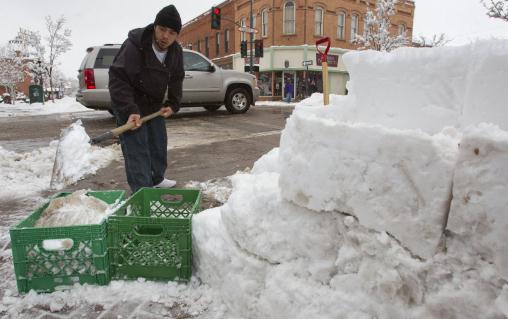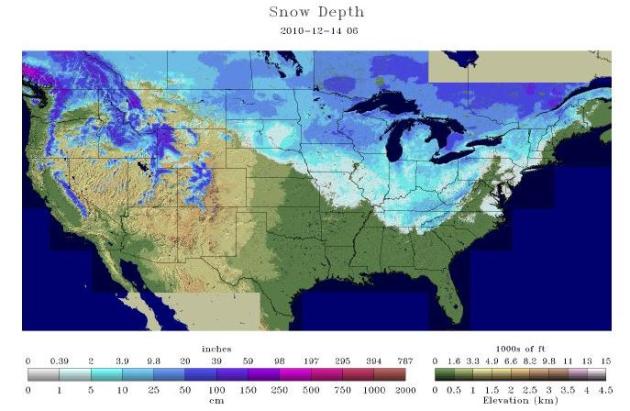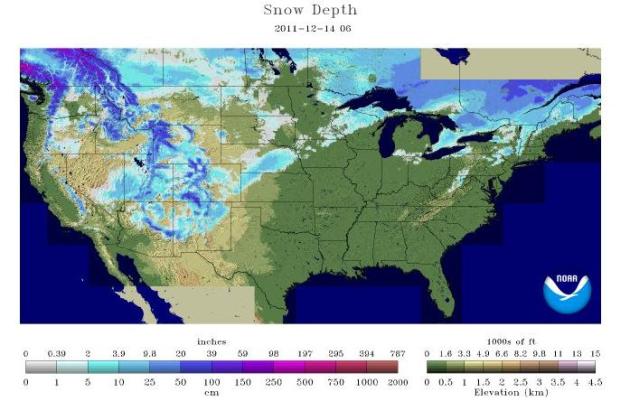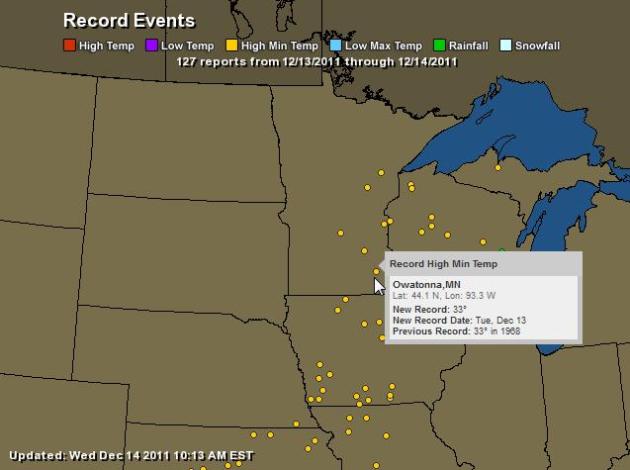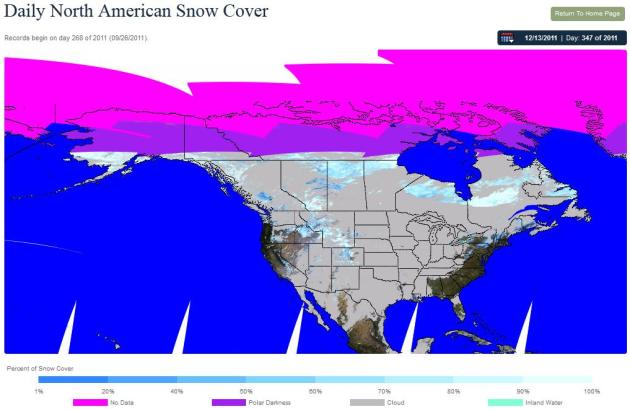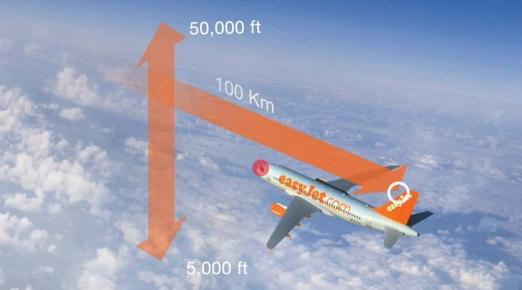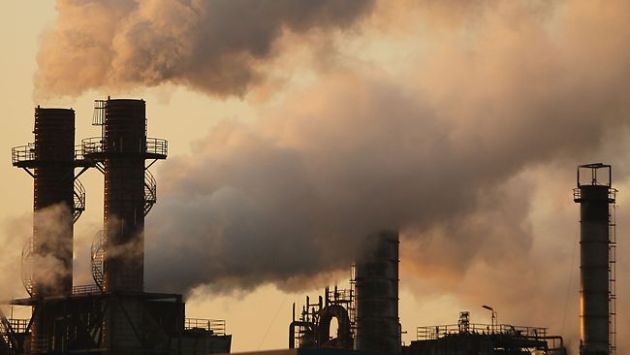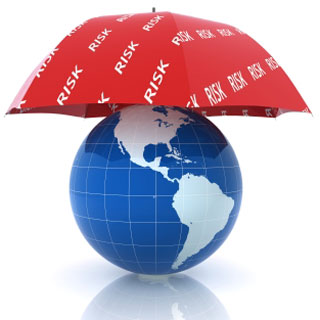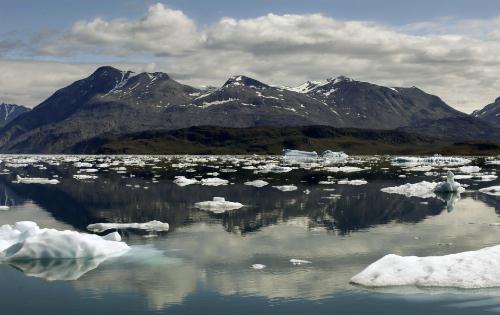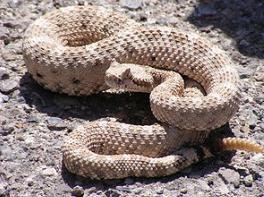December snowfall in the Twin Cities:
4.9" 2011 (as of December 14)
33.6" 2010
20.9" 2009
17.4" 2008
18.1" 2007
4.3" 2006
14.5" 2005
1.8" 2004
* photo above courtesy of the Star Tribune and the AP.
"
Wearing helmets and putting small children in car seats or infant carriers are two ways to increase survival chances that some experts are recommending and studying further in Jefferson County following the April 27 tornadoes. Using heavy blankets or mattresses to protect from debris is another strategy suggested from examining death reports and talking to survivors." - from an article in the Birmingham News, al.com, below.
"
How much is 11 degrees of warming? For help, let's inventory the warming we've already seen on our planet. Already, the Arctic Ocean has lost 40 percent of its ice mass since the 1970s. Already, wildfires in the American West destroy six times more forest land per year than 40 years ago." - from an Op Ed in the Baltimore Sun below.
One Mixed Up Weather Map. Which state has the most snow on the ground right now? Arizona. Far more than most of New England, the Great Lakes or Upper Midwest. As much as 2 feet of snow fell on the hills of central and northern Arizona since Monday.
Photo credit: "
Keith Woods makes a wall with snow while clearing a pathway in front of Maloney's Tavern in downtown Flagstaff, Ariz. Tuesday Dec. 13, 2011. Flagstaff logged more than a foot of snow and was expecting several more inches through Wednesday morning, sending the mountain city above its normal for this time of year. (AP Photo/The Arizona Republic, Carlos Chavez)"
Well-Earned Snow Day. The Flagstaff, Arizona area picked up over a foot of snow in the last 48 hours, much to the delight of kids of all ages. Photo courtesy of the Star Tribune and AP.
Snow Depth One Year Ago. Wow, what a difference a year makes. On December 14, 2010 a cool 10-20" of snow was on the ground from North Dakota into much of Minnesota, Wisconsin and the Great Lakes.
Snow Depth - 2011. Here is the latest snow cover map, valid December 14, showing an amazing lack of snow over the northern tier states. Even the snow belts downwind of the Great Lakes are reporting very little snow on the ground. The snow cover map looks like something out of late October or the first few days of November - not mid December. Map courtesy of NOAA.
Predicted Snow. Here's the NAM solution through midday Saturday, hinting at a plowable amount of snow from Rhinelander, WI into the U.P. of Michigan - the heaviest amounts staying north, over Ontario Canada. Again, this map looks like something out of late October, not 7 days away from the Winter Solstice. Map courtesy of NOAA and WeatherCaster.
5--Day Rainfall Amounts. Good news for drought-stricken Texas: models are predicting some 1-3" rainfall amounts for the Lonestar State, with heavy rain extending into the Ohio and Tennessee Valley.
Record Warm Nighttime Lows. Check out the dozens of records since Tuesday - nighttime temperatures are 20 degrees above average or more. Map courtesy of
Ham Weather and their new "Aeris" graphics.
Trending Warmer. NOAA's CPC (Climate Prediction Center) shows a continued bias toward warmer than average temperatures through next Friday, December 23, the result of a "modified Pacific flow". Winds aloft are howling from the direction of Seattle and Vancouver, not the Yukon or Arctic Circle. Map courtesy of Ham Weather and NOAA.
USA Snowcover. Where's the snow? The latest snow cover map is looking pretty sparse, more like mid October than mid December. More details from NASA'S
Snow And Sea Ice Mapping Project: "
Imagery of the MODIS snow-cover fraction (SCF), from the MODIS standard data product http://modis-snow-ice.gsfc.nasa.gov/ made by Land Atmosphere Near real time Capability for EOS (LANCE) is displayed to provide a view of North America snow cover in near-real time (NRT). The snow map is updated through the day as the MODIS orbit progresses westward. If you click on an area of interest it will be enlarged if the image was acquired within 7 days. Near real time snow-cover maps can be used to view the extent of snow cover after storm clouds clear from a region, to assess when there are clear views of snow-covered land, and to determine overall snow-cover extent on the continent."
For Hurricane Forecasters The Outlook Is Stormy. It's tough enougn making a 7-Day Outlook, but forecasting hurricane trends going out 6-12 months? I can understand why these tropical meteorologists are throwing in the towel.
Fox News has the story: "
Here's a forecast you might not expect. Two Colorado State University climatologists, who have independently been tracking and predicting the severity of hurricanes for nearly 30 years, are abandoning their long-range forecasting efforts. Simply put, the advance predictions just weren't accurate. "We have suspected issuing quantitative forecasts at this extended-range lead time, since they not proved skillful over the last 20 years," Philip J. Klotzbach and William M. Gray wrote in their annual December report intended to predict the severity of the upcoming year's Atlantic hurricane season."
Helmets, Car Seats May Lessen The Threat Of Tornado Fatalities. Here's a fascinating article from the
Birmingham News (al.com). Some of this makes sense, intuitively - but this is the first time I've seen an article address the notion of helmets and car seats being employed to lower the risk of tornado injury: "
Tornadoes are random killers with brutal methods. They employ bricks, 2-by-4s and chunks of trees to snap necks, crush ribs and bash skulls. They pelt and penetrate the flesh with shards of glass, sticks and stones. They fling human beings through the air like rag dolls. They push down walls and pile furniture on their victims until the suffocating weight squeezes out their last breath. But from the gruesome deaths can come lessons for survival. Wearing helmets and putting small children in car seats or infant carriers are two ways to increase survival chances that some experts are recommending and studying further in Jefferson County following the April 27 tornadoes."
Will Record Flood Losses Save Or Drown Flood Insurance? The story from
UPI.com: "
Just as Congress approaches a drop dead deadline Friday on whether or not to continue the nation's flood insurance program, a new report details the cost and extent of one of worst year for floods in recent history. CoreLogic estimates flood losses in the U.S. this year at approximately $10.67 billion, three times the amount forecast for next year, based on various flooding and storm events recorded in the National Climate Data Center. The melting of an above-average snowpack across the northern Rocky Mountains, combined with abnormally high precipitation, caused the Missouri and Souris rivers to swell beyond their banks across the upper Midwest. Record-breaking rainfall in the Ohio valley in the spring and summer, combined with melting snowpack, resulted in historical flooding along the Mississippi River and its tributaries."
How Much Meteorology Is In The Farmer's Almanac Anyway? RVAnews.com has an interesting story - here's an excerpt: "
I have a confession to make. I’ve never read The Old Farmer’s Almanac. You might make the assumption that it’s wise to keep up with the competition, and while I do that on a regular basis, I’ve never honestly paid much attention to The Almanac. I’ve always assumed that their “forecasts” were something akin to the daily horoscope–so generic that they can easily be construed to be correct in any number of ways, yet nearly impossible to show anything statistically. Published every year since 1792, The Old Farmer’s Almanac is the longest continuously-published periodical in American history. One of the driving forces behind the continued popularity of the publication has been its long-range weather forecasts. On the menu of their website, the weather section is third on the list, just below “Home” and “Almanac Store,” and current weather forecasts get center stage on their frontpage. They have a section offering “instant access to our best content” featuring the 2012 long-range forecast, and a “customized weather history,” available to subscribers willing to pay $4.95 for 30 days of access. The press release announcing the 2012 edition touts their “80-percent accurate weather forecasts.”
Plane-Mounted Camera Detects Hazardous Volcanic Ash In The Air. Did you know there are 150 or so active volcanoes in the USA (most of them in Alaska?) Jets avoid ash-spewing volcanoes at all cost - ash can cause jet engines to fail, to literally seize up - turning a jet into an oversize glider. Not good. So any device that can help to detect volcanic ash before a plane flies into it is a ver good thing.
Gizmag.com has the story: "
A new invention out of Norway promises to keep the skies of the world open. When a volcano in Iceland erupted in 2010, it spewed out invisible clouds of ash that spread across Europe - effectively shutting down all civilian and military air traffic, stranding millions of people and costing the world economy billions of dollars. Now, a new camera has been developed that will allow pilots to see and avoid volcanic dust clouds, making similar eruptions in the future much less disruptive."
Photo credit above: "
The AVOID System designed to allow aircraft to detect volcanic ash plumes and avoid them (Image: Nicarnica Air)"
Occupy Wall Street - Another Perspective. Are we a nation of ingrates? I know I (personally) take way too much for granted. Corporations have been vilified - but each and every one of us is lucky...blessed...to be alive at this time, in this country, with so many of our basic needs taken care of. Bill Whittle shares his thoughts and makes a few good points at "
Afterburner" - courtesy of Pajamas Media and YouTube. You may not agree with everything he's saying, but I think this is worth a look.
The New Math. Did I miss something? Maybe I slept through the 90" of snow that fell yesterday? 97.9" of snow so far this winter season at KMSP (Twin Cities)? Say what? Obviously this is a typo, a computer-glitch, but I almost fell off the sofa when I called up Wednesday's climate info!
Remembering December 2010. I took this picture from my front porch one year ago, when we were knee-deep in snow, shivering through 3 nights of subzero temperatures. Remember?
December 2011. Rain, puddles - it looked more like late March out there.
Climate Stories...
The Mercury Moment. Here's an Op-Ed from New York City Mayor Michael Bloomberg in the
Huffington Post: "
Over the next few days, the Obama administration will decide whether to address a major public health challenge facing the country: the large amount of mercury that continually pours out of coal-fired power plants, contaminating our air and drinking water. Every year, mercury from coal-fired power plants is responsible for thousands of premature deaths, heart attacks, and serious respiratory illnesses. In addition, mercury is one of the leading causes of preventable birth defects....Coal-fired power plants are responsible for 70 percent of our nation's mercury emissions. After being released into the air we breathe, mercury -- a heavy metal -- also falls into our soil and water, where it can contaminate the food we eat, especially fish. The EPA has proposed rules that would reduce mercury emissions from coal-fired power plants by 90%, preventing 12,200 emergency room visits and saving $80 billion a year in health care costs. The rules -- now sitting on the president's desk -- are two decades overdue."
The Hottest Issue: Climate Change Dwarfs Other Problems. From the
Baltimore Sun: "
Already, the Arctic Ocean has lost 40 percent of its ice mass since the 1970s. Already, wildfires in the American West destroy six times more forest land per year than 40 years ago. Already, the biggest hurricanes come more frequently, and the city of Virginia Beach is starting to plan a methodical retreat from its shoreline due to sea-level rise. Already, Allstate insurance company won't issue any new homeowners policies in coastal Maryland and Virginia because of stronger storms And how much warming did it take to trigger all of the above? How much to trigger the extreme floods and droughts and heat waves from China to Australia to Texas that scientists say are connected to climate change? Answer: 1.4 degrees Fahrenheit.
Now multiply by eight. If 1.4 degrees gets us a soon-to-be-ice-free Arctic and nearly nonstop extreme weather worldwide, what will 11 degrees bring us?"
Global Warming "Anomaly" In 2011 Triggered 100 Billion Tons Of Ice Loss, Sea Level Rise In Greenland: Study. The story from the
International Business Times: "
Data obtained from approximately 50 Global Positioning Systems (GPS) in Greenland indicates massive quantities of ice loss in the country's southern region, which researchers suggest is the result of unusual warming patterns in 2010. The report states that in 2010 the southern half of Greenland lost 100 billion tons of ice, as a result of atypically hot temperatures and the consequent rise of bedrock, beneath the island, by an additional quarter of an inch." Photo courtesy of Reuters.
Rattlesnakes Can't Keep Up With Climate Change.
Discovery News has more details: "
As the Earth's climate changes over the next century, rattlesnakes will have to adapt as much as 1,000 times more quickly than they have in the past to find habitats that they can tolerate. Some species may be flexible enough to handle the rapidly changing conditions. But many will be unable to slither away fast enough to survive. And the same is likely true for other kinds of creatures, including mammals and other reptiles. "I'm not sure how species will be able to follow the climate so quickly," said Michelle Lawing, a paleobiologist at Indiana University in Bloomington. "In some cases, it might be better for conservationists to move them or create managed corridors where they could be assisted to better, more suitable habitats." Photo above courtesy of
Wikipedia.
21st Century Scopes Monkey Trial: Ed Markey And Jim Inhofe To "Debate" Climate Science. The story from
Think Progress: "
Spurred by a challenge from Ralph Nader, Sen. Jim Inhofe (R-OK) and Rep. Ed Markey (D-MA) plan to debate global warming. Tulsa World’s Jim Myers reports that Inhofe accepted Nader’s challenge to discuss the science of climate change with another member of Congress. Markey, the former chair of the House Select Committee on Global Warming, agreed to debate Inhofe, who continues to insist that global warming is an international “hoax,” even though his state has been wracked by record heat waves, storms, and drought. Inhofe “would welcome the opportunity to debate,” he said."
